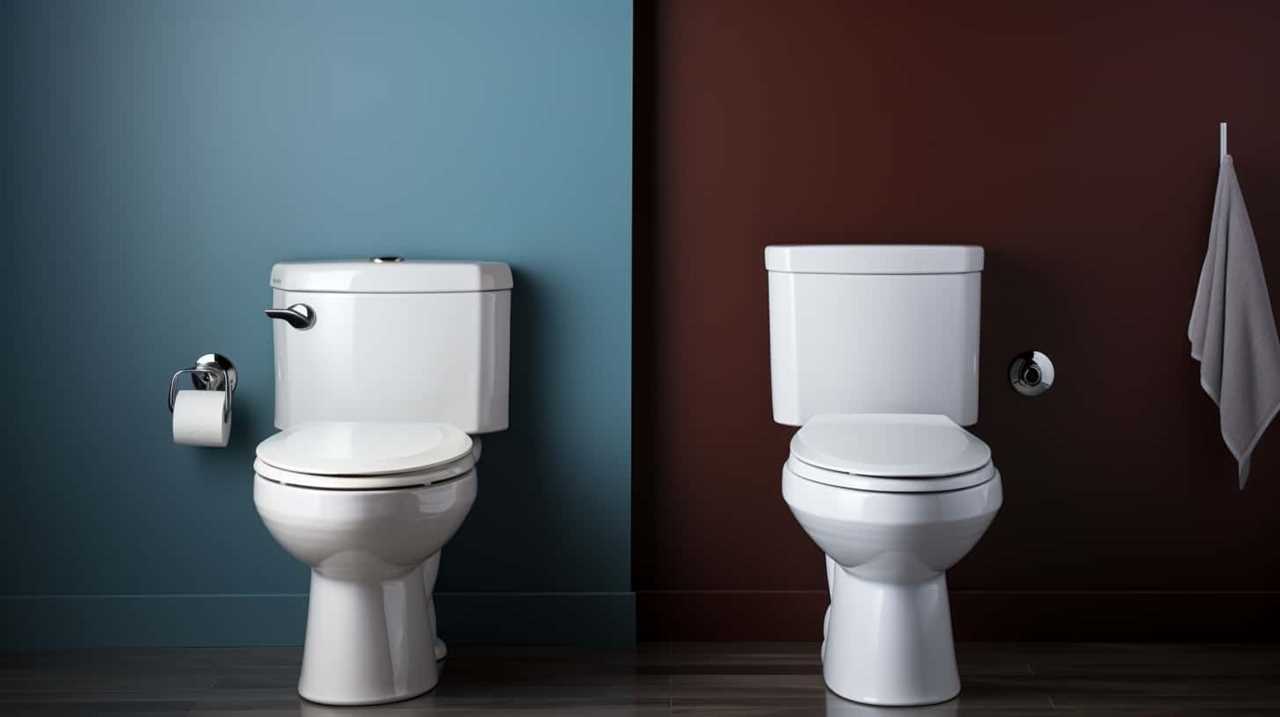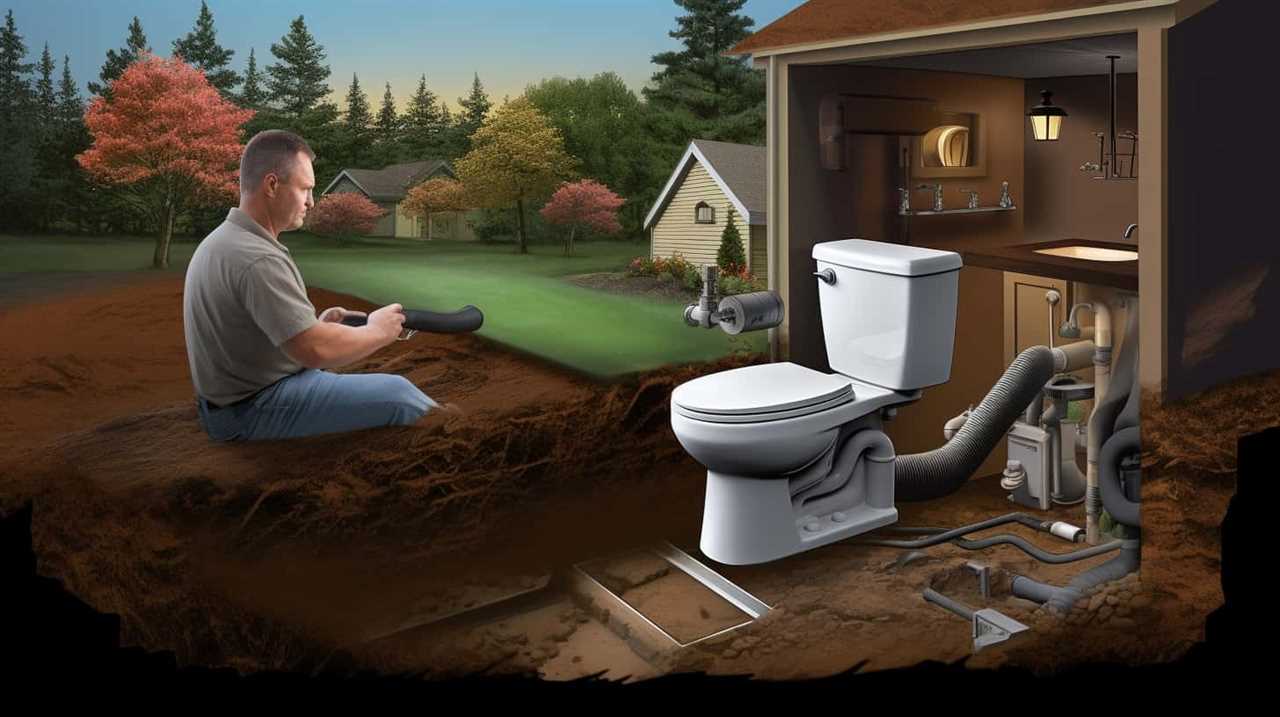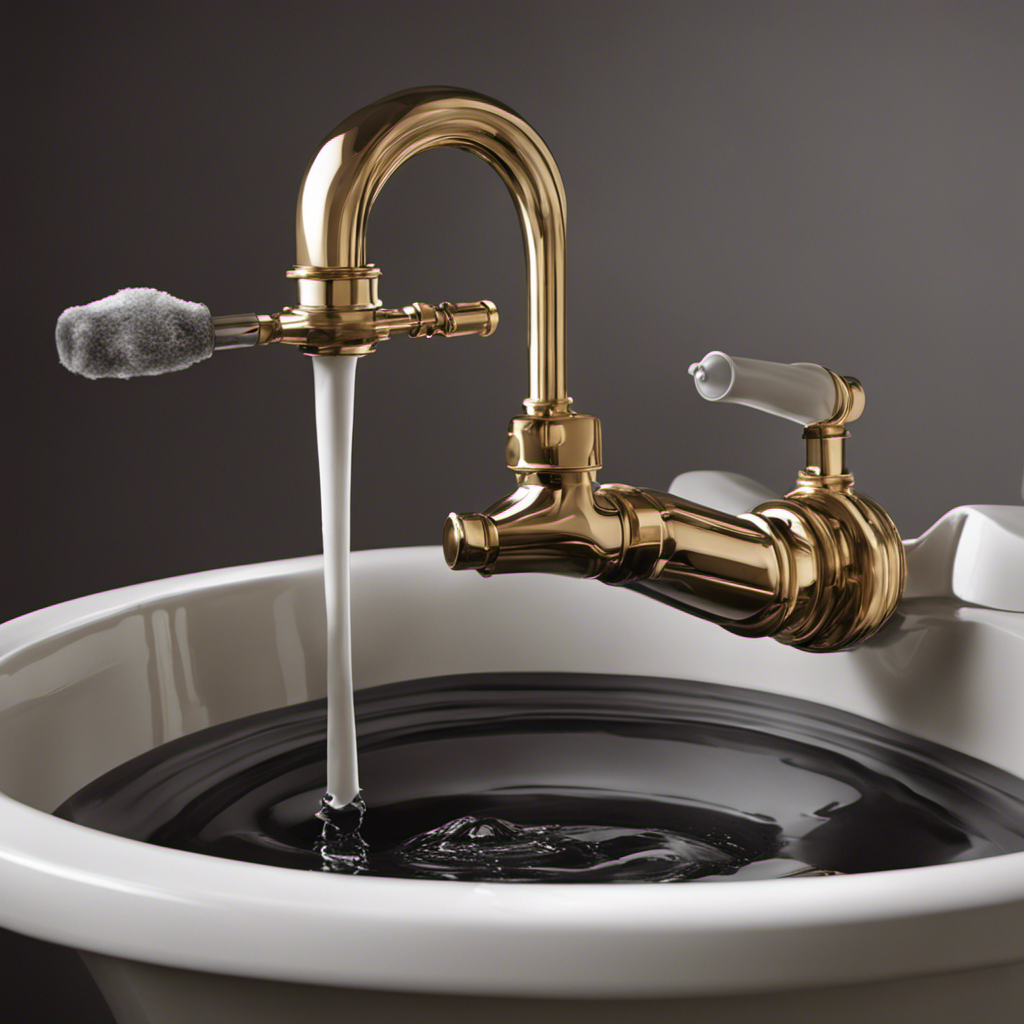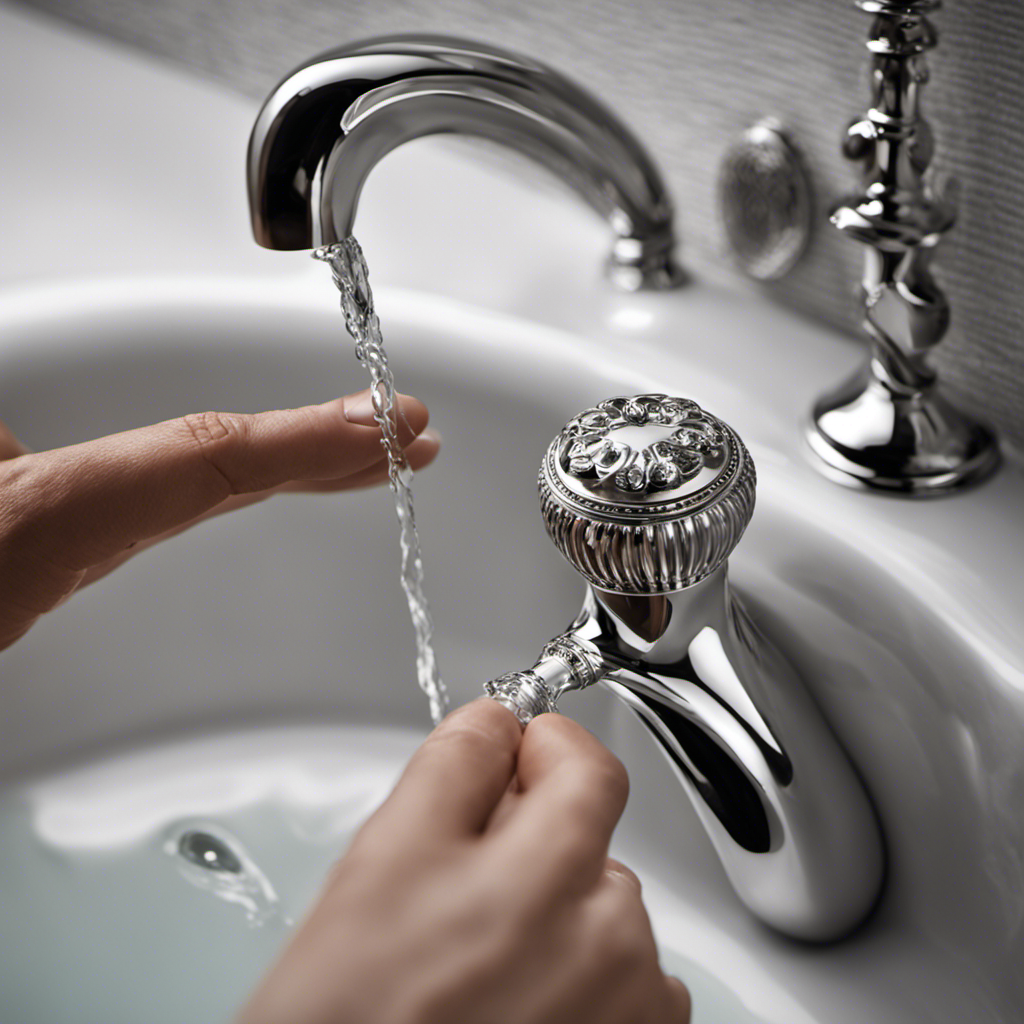As a homeowner, maintaining a fully functional toilet is essential. One crucial component of a toilet is the fill valve.
Imagine this valve as the heart of your toilet, responsible for regulating the water flow and ensuring a proper flush.
But what happens when this vital piece malfunctions?
In this article, I will guide you through the signs of a faulty fill valve, the tools needed for replacement, and offer tips for maintaining this critical component of your toilet system.

Key Takeaways
- Signs of a faulty fill valve include longer fill times, continuous running water, inconsistent water levels, weak or incomplete flushes, and water leaking from the tank.
- Tools and materials needed for fill valve replacement include an adjustable wrench, screwdriver, pliers, bucket or towel, and Teflon tape.
- The step-by-step process for replacing a fill valve includes shutting off the water supply, flushing the toilet, disconnecting the water supply line, unscrewing the old fill valve, and installing the new fill valve according to the manufacturer’s instructions.
- To maintain a fill valve, regularly inspect for leaks, clean to remove sediment and debris, adjust the water level as needed, replace worn-out parts, and test the toilet after adjustments or maintenance.
Signs of a Faulty Fill Valve
I’ve noticed several signs that indicate a faulty fill valve in a toilet. One common problem is when the toilet takes longer than usual to fill up after flushing. This could be due to a worn-out fill valve, which fails to allow water to flow at the desired rate.
Another sign is a continuous running water sound, even when the toilet isn’t in use. This indicates that the fill valve isn’t sealing properly, causing water to constantly flow into the tank.
To address these issues, you can adjust the fill valve. Start by locating the adjustment screw on top of the fill valve and turning it clockwise to increase the water level or counterclockwise to decrease it. Make small adjustments until the desired water level is achieved.
Remember to test the toilet after each adjustment to ensure proper functioning.

Tools and Materials Needed
To complete the task at hand, I’ll need a few specific tools and materials. Here is a list of the tools needed:
- Adjustable wrench: This will be used to loosen and tighten the nuts and bolts.
- Screwdriver: You’ll need this to remove any screws holding the fill valve in place.
- Pliers: These will come in handy for gripping and manipulating small parts.
- Bucket or towel: Have a bucket or towel on hand to catch any water that may spill during the process.
Having these tools ready will ensure a smooth and efficient replacement of the fill valve.
Now that we’ve all the necessary tools, let’s move on to the step-by-step guide to replacing the fill valve.
Step-by-Step Guide to Replacing the Fill Valve
I will begin by shutting off the water supply to the toilet. This is an essential step before proceeding with fill valve installation. Locate the shut-off valve, typically positioned on the wall behind or near the toilet. Turn the valve clockwise until it’s fully closed to stop the water flow.

Next, flush the toilet to drain any remaining water from the tank. Once the tank is empty, disconnect the water supply line from the fill valve using an adjustable wrench. Remove the old fill valve by unscrewing it counterclockwise.
To install the new fill valve, follow the manufacturer’s instructions. Adjust the fill valve to the correct water level by manipulating the float or height adjustment screw.
Tips for Maintaining a Fill Valve
Now let’s delve into some practical maintenance tips to keep your fill valve in optimal working condition. Regular maintenance is crucial to prevent common fill valve problems and ensure a smoothly functioning toilet. Here are some tips to keep in mind:
- Check for leaks: Regularly inspect the fill valve for any leaks. Leaks can cause water wastage and damage to surrounding areas.
- Clean the valve: Sediments and debris can accumulate over time and affect the performance of the fill valve. Clean it periodically to remove any buildup.
- Adjust the water level: If the water level in your toilet bowl is too high or too low, it may indicate a problem with the fill valve. Adjust the water level as needed.
- Replace worn-out parts: Over time, certain components of the fill valve may wear out. Replace any worn-out parts to maintain optimal functionality.
Troubleshooting Common Fill Valve Issues
One common fill valve issue that can occur is a slow refill. This can be frustrating and inconvenient, but luckily it can often be resolved with a few simple troubleshooting steps. The first thing to check is the water level in the tank. If it is too low, the fill valve may not be getting enough water to refill properly. Adjusting the water level by turning the adjustment screw on the fill valve can help resolve this issue. Another common cause of a slow refill is sediment buildup in the fill valve. Over time, sediment can accumulate and clog the valve, preventing it from filling efficiently. Cleaning the fill valve by removing any sediment buildup can often solve this problem.

| Issue | Possible Solution |
|---|---|
| Slow refill | Adjust water level by turning the adjustment screw on the fill valve. |
| Sediment buildup | Clean the fill valve by removing any sediment buildup. |
Frequently Asked Questions
How Does a Toilet Fill Valve Work?
Toilet fill valves are essential for the proper functioning of a toilet. They regulate the water flow and refill the tank after each flush. Troubleshooting fill valves can involve checking for leaks or adjusting the water level.
Can a Faulty Fill Valve Cause a Toilet to Constantly Run?
Yes, a faulty fill valve can cause a toilet to constantly run. For example, if the valve doesn’t close properly, water will continuously flow into the tank. Regular toilet maintenance and troubleshooting of fill valves can prevent this issue.
How Often Should a Fill Valve Be Replaced?
A fill valve should be replaced periodically to ensure optimal performance. Signs of a worn fill valve include inconsistent water flow and leaks. The fill valve lifespan varies, but regular maintenance can extend its longevity.
What Are the Potential Consequences of Not Replacing a Faulty Fill Valve?
Not replacing a faulty fill valve can lead to potential water damage and increased water bills. It’s like ignoring a leaky faucet; the consequences may be costly and inconvenient.

Are There Any Safety Precautions to Consider When Replacing a Fill Valve?
When replacing a toilet fill valve, it is important to follow proper installation procedures to ensure safety. This includes shutting off the water supply, draining the tank, and carefully aligning and securing the new valve.
Conclusion
In the realm of toilet maintenance, the fill valve holds significant importance. It acts as the gatekeeper of water flow, ensuring the tank fills up efficiently after each flush.
By promptly identifying signs of a faulty fill valve and following the step-by-step guide for replacement, one can keep their toilet functioning flawlessly.
Remember, a well-maintained fill valve is like a conductor orchestrating the symphony of a perfectly functioning toilet. Keep it in top shape and bid farewell to plumbing woes!











